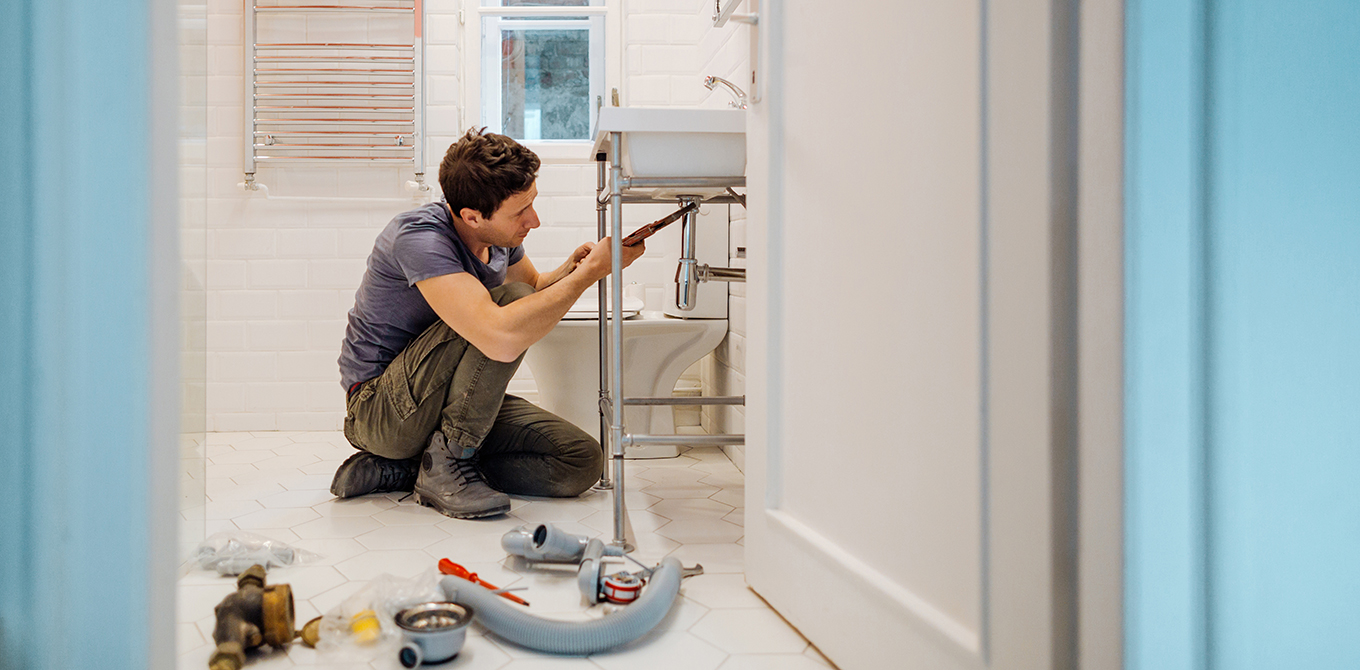How to save for home improvements and maintenance
Are you prepared to spend $1,500 for a new water heater? Or $2,000 for a new washer/dryer set? Dealing with big home repair and maintenance costs like these are part of homeownership, but they don't have to be painful. If you have a home maintenance and repair fund, you can turn these major headaches into minor annoyances.
Knowing how much to save and the right strategies to use can be tricky, though. Here are some guidelines to help you develop a winning savings plan to keep your home in tip-top condition:
The 1% to 4% rule
One of the most common rules of thumb cited by financial experts is to save a set percentage of your home's value each year; typically, they recommend between 1% and 4%, depending on your home's current condition.
If your home is in good shape, then 1% might be all you need. But if your home has a backlog of things that need to be done, 4% might help you better prepare for more work (and a higher price tag).

The square-footage rule
Another rule of thumb that people commonly use is the square-footage rule, which states that you should save $1 per square foot of your home's size per year.

The 10% rule
Some people prefer to attach their savings goal to their mortgage payment, and 10% is a common number. For this rule of thumb, you'd calculate 10% of your mortgage payment amount and send that to your savings account at the same time you make your mortgage payment.

Create a custom savings plan
The above three rules of thumb all give you a place to start saving. But let's say you know you have a big expense coming up in the future.
Many of the larger components of a house—like the roof and the appliances—have a set lifespan. See this chart of the life expectancy for home components from the International Association of Certified Home Inspectors.
Asphalt shingle roofs generally need to be replaced about every 20 years, for example, and cost an average of $10,000, according to the U.S. Office of Energy Efficiency & Renewable Energy.
If you know you're 10 years away from having to replace your roof and it'll cost $10,000, you can start saving for it now. To know how much to save each month, divide the cost by the number of months you have to save. In this example, you would save $83 per month ($10,000 / 120 months) to ensure you have enough set aside when the time comes.
Doing this for every little thing in your household would be overwhelming. But you can use this approach for the larger items, ideally along with the rules of thumb outlined above so you're always prepared for any event.
Automate your savings
Once you decide on a savings target, how do you actually put it into practice? A good way is to automate your savings.
To start, calculate how much you'll need to set aside per month and set up an automatic transfer from your checking account to your savings account for this amount each month. If you set it up for right after you get paid, then you won't even "miss" the money.
Some people just use one savings account, and that can work. But if you really want to make sure the money remains earmarked for your home, try keeping track of your savings total with a monthly line-item budget, or even a separate savings account entirely.
Putting it all together
Calculate your monthly savings amount for each of these rules to see what makes the most sense for you and your budget.

As you can see, these savings targets vary widely. The right amount for you depends on your home's condition and your personal comfort level. If you'd feel better knowing that you can handle most home repairs as they come up, choose the higher amount. If you'd prefer to save less and find other ways to supplement repair costs, then choose a smaller amount.
The most important thing is that you save regularly, and you save enough so that you can fully enjoy all of the benefits that homeownership has to offer.




